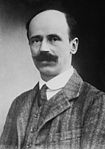1931 Hungarian parliamentary election
| |||||||||||||||||||||||||||||||||||||||||||||||||||||||||||||||||||||||||||||||||||||||||||||||||||||||||||||||||||||
All 245 seats in the Diet 123 seats needed for a majority | |||||||||||||||||||||||||||||||||||||||||||||||||||||||||||||||||||||||||||||||||||||||||||||||||||||||||||||||||||||
|---|---|---|---|---|---|---|---|---|---|---|---|---|---|---|---|---|---|---|---|---|---|---|---|---|---|---|---|---|---|---|---|---|---|---|---|---|---|---|---|---|---|---|---|---|---|---|---|---|---|---|---|---|---|---|---|---|---|---|---|---|---|---|---|---|---|---|---|---|---|---|---|---|---|---|---|---|---|---|---|---|---|---|---|---|---|---|---|---|---|---|---|---|---|---|---|---|---|---|---|---|---|---|---|---|---|---|---|---|---|---|---|---|---|---|---|---|---|
| Turnout | 59.2% | ||||||||||||||||||||||||||||||||||||||||||||||||||||||||||||||||||||||||||||||||||||||||||||||||||||||||||||||||||||
| |||||||||||||||||||||||||||||||||||||||||||||||||||||||||||||||||||||||||||||||||||||||||||||||||||||||||||||||||||||
| |||||||||||||||||||||||||||||||||||||||||||||||||||||||||||||||||||||||||||||||||||||||||||||||||||||||||||||||||||||
 |
|---|
|
Parliamentary elections were held in Hungary between 28 and 30 June 1931.[1] The result was a victory for the Unity Party, which won 149 of the 245 seats in Parliament. István Bethlen remained Prime Minister, but resigned on 24 August due to the effects of the Great Depression and was replaced by Gyula Károlyi.[2]
Electoral system[]
The electoral system remained the same as in 1926. There were 199 openly elected single-member constituencies and 11 secretly elected multi-member constituencies electing a total of 46 seats.[3][4]
Results[]
| Party | SMCs | MMCs | Total | |||||||
|---|---|---|---|---|---|---|---|---|---|---|
| Votes[a] | % | Seats | Votes[b] | % | Seats | Votes | % | Seats | +/– | |
| Unity Party | 483,149 | 45.3 | 138 | 120,427 | 27.2 | 11 | 603,576 | 40.0 | 149 | –12 |
| Christian Economic and Social Party | 118,898 | 11.1 | 24 | 65,720 | 14.8 | 8 | 184,618 | 12.2 | 32 | –3 |
| Independent Smallholders Party | 162,139 | 15.2 | 8 | 11,338 | 2.6 | 2 | 173,477 | 11.5 | 10 | New |
| Hungarian Social Democratic Party | 34,188 | 3.2 | 0 | 131,606 | 29.7 | 14 | 165,794 | 11.0 | 14 | 0 |
| Unofficial Unity Party candidates | 84,156 | 7.9 | 8 | – | – | – | 84,156 | 5.6 | 8 | –1 |
| Unified Liberal Democratic Party | – | – | – | 45,977 | 10.4 | 4 | 45,977 | 3.0 | 4 | – |
| National Independence Kossuth Party | 28,518 | 2.7 | 0 | – | – | – | 28,518 | 1.9 | 0 | –1 |
| Christian Opposition | 1,647 | 0.2 | 0 | 16,233 | 3.7 | 2 | 17,880 | 1.2 | 2 | New |
| National Democratic Party | 1,671 | 0.2 | 0 | 14,259 | 3.2 | 2 | 15,930 | 1.1 | 2 | New |
| Christian Socialist Party | 6,413 | 0.6 | 1 | 4,583 | 1.0 | 0 | 10,996 | 0.7 | 1 | New |
| Independent Civic Party | – | – | – | 7,316 | 1.7 | 1 | 7,316 | 0.5 | 1 | New |
| Christian Economic Opposition Party | 7,109 | 0.7 | 1 | – | – | – | 7,109 | 0.5 | 1 | New |
| National Radical Party | 6,057 | 0.6 | 1 | – | – | – | 6,057 | 0.4 | 1 | New |
| Christian National Opposition Party | – | – | – | 5,318 | 1.2 | 1 | 5,318 | 0.4 | 1 | New |
| Independent Left Party | – | – | – | 5,213 | 1.2 | 1 | 5,213 | 0.3 | 1 | New |
| Hungarian Agricultural Labourers and Workers Party | 5,198 | 0.5 | 0 | – | – | – | 5,198 | 0.3 | 0 | 0 |
| Allied Civic Parties | – | – | – | 6,929 | 1.6 | 0 | 6,929 | 0.5 | 0 | New |
| United National Party of Front Veterans | 1,277 | 0.1 | 0 | 3,527 | 0.8 | 0 | 4,084 | 0.3 | 0 | New |
| Racist Party | 4,362 | 0.4 | 0 | – | – | – | 4,362 | 0.3 | 0 | New |
| Smallholder | 3,735 | 0.4 | 0 | – | – | – | 3,735 | 0.3 | 0 | New |
| Agro-Democratic Party | 3,567 | 0.3 | 1 | – | – | – | 3,567 | 0.2 | 1 | New |
| United Opposition | 2,891 | 0.3 | 1 | – | – | – | 2,891 | 0.2 | 1 | New |
| Christian Social and Economic Party | 2,343 | 0.2 | 0 | – | – | – | 2,343 | 0.2 | 0 | New |
| Independent Christian Socialist Party | 2,096 | 0.2 | 0 | – | – | – | 2,096 | 0.1 | 0 | New |
| Győr City Economic Party | – | – | – | 1,936 | 0.4 | 0 | 1,936 | 0.1 | 0 | New |
| Smallholders, Craftsmen and Agricultural Workers Nagyatádi Party | 1,586 | 0.2 | 0 | – | – | – | 1,586 | 0.1 | 0 | New |
| Independents | 106,446 | 10.0 | 16 | 2,681 | 0.6 | 0 | 109,127 | 7.2 | 16 | +6 |
| Invalid/blank votes | 0 | – | – | – | – | – | – | – | ||
| Total | 1,067,446 | 100 | 199 | 100 | 46 | 100 | 245 | 0 | ||
| Registered voters/turnout | 1,322,080 | 80.7 | – | 585,032 | – | 1,907,112[c] | – | – | ||
| Source: Nohlen & Stöver | ||||||||||
a The number of votes refers to only 132 of the 199 single-member constituencies, as 67 seats were uncontested.[3]
b The number of votes refers to seven of the eleven MMCs.[3]
c The total number of registered voters was 2,549,178; the figure in the table refers to the number of registered voters in the contested seats for which figures are available.[3]
References[]
- 1931 elections in Europe
- Elections in Hungary
- 1931 in Hungary



